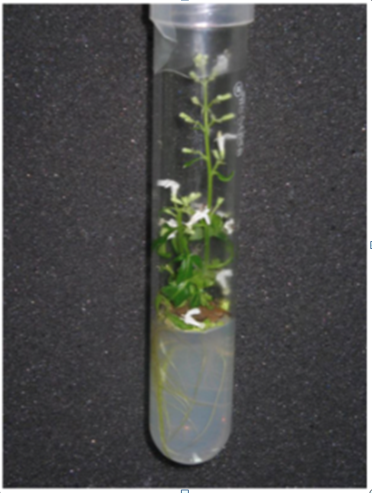This photograph illustrates micropropagation, a form of artificial reproduction in plants. Which of these is unlikely to be an application for micropropagation?

a. preserving plants vulnerable to extinction
b. growing plants for experiments in labs
c. mass-producing grain for famine relief
d. breeding plants with pharmacological value
c. mass-producing grain for famine relief
You might also like to view...
The Calvin cycle can only produce sugar if ______ can enter through the pores of the leaves.
A. water B. O2 C. CO2 D. N2 E. potassium
Explain the difference between an angiosperm seed and a gymnosperm seed
What will be an ideal response?
Which of the following is false about the enzyme lysozyme?
A) can be found in mucus, saliva, tears, and breast milk B) destroys viruses and fungi C) acts as a chemical barrier D) kills bacterial cells E) breaks down bacterial cell walls
Which of the following statements best describes the effect of mass extinctions and the radiation of new bio-logical diversity?
a. Mass extinctions have no effect on radiations. b. Mass extinctions prevent potential radiations by eradicating the necessary biological variabil-ity. c. Mass extinctions provide opportunities for radiations by survivors as dominant groups die out. d. The overall effect of mass extinctions on radiations depends on the time scale under considera-tion.